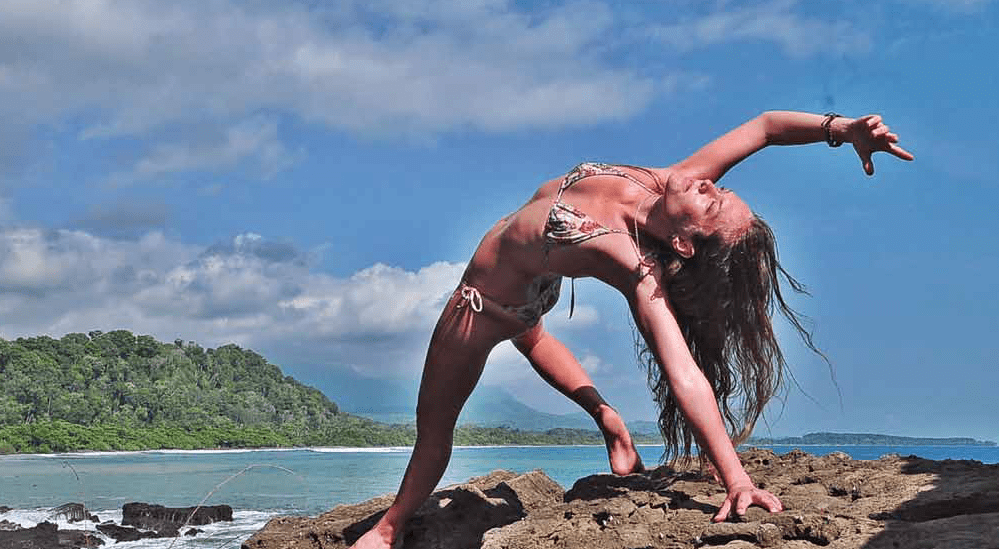
The Poisonous Granular Frog
AUTHOR: Josue Alberto Vargas Montoya (14 years of age)
The spectacular family of poisonous frogs (Dendrobatidae) surprises with its beautiful and colorful and lethal frogs. In Costa Rica, we have eight species of poisonous frogs. Those of the genus "Silverstoneia" and "Allobates" are not harmful.
The genus "Oophaga" is famous for its "pants," and the only two species of Oophaga of Costa Rica (O. Pumilio and O. Granulifera) are those that present pants.
The Granular Poisonous Frog (Oophaga Granulifera) is endemic to the Central Pacific and southern Costa Rica and part of Panama. It can be located near gorges in the woods.
In Costa Ballena, you can find the Red morpho with its green pants and his back "Granular," hence its name.
After Hacienda Barú towards the Central Pacific, its main red color changes to Orange for the Matapalo sector, yellow in Portalón, and finally an olive green in San Rafael, Quepos always with its green and sometimes light blue pants.
These frogs are in danger due to the loss of their habitat. It is also exploited by smugglers to sell them as Terrarium pets.
Its venom is neurotoxic and very dangerous. It is not recommended to manipulate animals in freedom, especially the beautiful multicolored frogs.
The dangerous thing would be for the poison to reach a wound, or you would suck it.
Indigenous peoples used the poison of these frogs for hunting, smearing the poison on their arrows. That is why some of them are called "arrowhead frogs or dart frogs" in general (phyllobates).
Granular poisonous frogs are well distributed in Costa Ballena. It is a great attraction for tourists and so of interest for tour guides. Costa Ballena is one of the main places to see the Red Morpho, one of the granular venomous frogs.
They are diurnal, and males are heard singing to attract females to reproduce. The female lays her eggs in leaf ponds in the forest. As the hours pass, the eggs become tadpoles waiting for their father to place them in a bromeliad where they will be safe.
The mother feeds them with infertile eggs until they grow and can find food on their own.

YABASUJKRA
~ by Kurandenk (Huella del Jaguar / The Jaguar’s footprint)People from Boruca have many beliefs, and the stories, legends, and myths are part of our lives. Among such beliefs, there is the respect for nature. We know […]

Blue Flag – Marine Ballena National Park
~ by Stephanie Mory Villaseñor – Sub-admistradora Área de Conservación OsaThis year in March, the Marino Ballena National Park was awarded 4 Ecological Blue Flags, thanks to the joint efforts of volunteers and local organizations that make up […]

Stay one more night ~ a Whale of a Deal, Whales and Dolphins Festival
~ by Perry Gladstone Dear associate and companies of Costa Ballena. During the month of September, the annual Whales and Dolphins Festival attracts more than 6000 people to our region. This is an incredible business opportunity and we want to […]

Continuation of the 8 Limbs of Ashtanga – Asana
~ by Pila SalazarAsanas (yoga postures) comprised the third limb of Ashtanga Yoga. Although it is only a branch, it is what most of the western world conceived as “Yoga”. I started practicing in my early twenties. […]

480 Horse Riders
~ by Dagmar Reinhard The Horse Riding Commission of San Josecito deserves special recognition for the recent equestrian event held under the umbrella of the 2017 Summer Festival in Bahía – Uvita. Already last year, the commission began […]

Great coffee and warm, welcoming people
~ by Pam CapistaGreat coffee and warm, welcoming people – two of Costa Rica’s amazing resources. I had the great pleasure of visiting don Emilio’s coffee farm in San Luis and touring the farm with him and his […]
What to do, Where to eat and Where to stay…
- Activities and Tours
- Whale Watching Tour
- Natural Attractions
- Marino Ballena National Park
- Restaurants
- Hotels and Accommodations
Looking for business directories, maps or other printouts? We’ve got that too!
- Tide Charts
- Bus Schedules
- Dominical Business Directory
- Uvita Business Directory
- Costa Ballena Map
- Dominical map
- Uvita map
- Ojochal map
South Pacific Costa Rica Beaches
Dare to Discover and Enjoy…
Check out…
Need help planning your next trip? Let us help you with your Costa Rica vacations!
Email: carlos@ballenatales.com
Phone: +(506) 8946 7134 or +(506) 8914 1568
